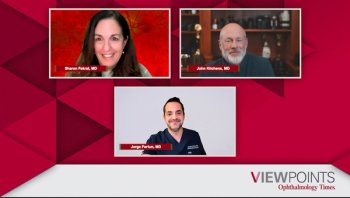
Throwback Series: When tools of the past teach new lessons
Neda Shamie, MD, recounts a humbling experience performing cataract surgery in Honduras using older-generation phaco machines, revealing how technology elevates both skill and patient care.
In celebration of Ophthalmology Times’ 50th anniversary, leaders revisit a memorable “throwback” case from earlier in their careers. In this special series, they reflect on how evolving knowledge, techniques, and technologies have transformed the way such cases are managed today. Join us as we look back at pivotal moments in their professional journeys — and explore how far the field has come.
This episode highlights an experience performing cataract surgery in Honduras using older-generation phaco technology. In revisiting the tools of the past, the ophthalmologist was reminded of how transformative today’s technology has been — and how it affects both surgical skill and outcomes.
For Neda Shamie, MD, a cataract, LASIK, and corneal surgeon and a partner at the Maloney-Shamie-Hura Vision Institute in Los Angeles, California, the evolution of cataract surgery has been both exhilarating and humbling. “I have been in ophthalmology for 20 some years, and I have grown with the evolution of cataract surgery,” she said. “And I'll kind of do a little bit of a throwback of my memory of cataract surgery when I first started, and then how it feels now.”
Shamie noted that ophthalmology remains one of the most rapidly innovative fields in medicine, a fact she emphasizes not only professionally but personally. “And I want to say this loud and clear, because I want my daughter to consider going into ophthalmology, because I find that to be the most exciting part about what I do every day, where each year, I have access to better and better technology thanks to that rapid evolution of innovations.”
Yet, the rapid pace of technological change also brings moments of humility. She recalls a recent trip to Honduras to provide cataract surgery at a charitable center serving patients who could not otherwise afford care. “I was told, well, we have the phaco machines we have are the older phaco machines, some of the Alcon older phaco machines. And I said, that's okay, because I learned my residency, ophthalmology residency, was using the older machines, and I'm perfectly comfortable using these older phaco machines.”
Despite her confidence, the experience quickly became a powerful lesson in perspective. Operating with older-generation phaco technology, Shamie found herself confronting the limitations imposed not by her skill, but by the tools at hand. “I have to tell you, I was humbled by the whole experience, because operating on the systems that I used to use 20 years ago made me realize that as great of a surgeon as I feel that I am, so much of my surgical skills are dependent on the technology, and I felt like a terrible surgeon compared to my skills today with the right tools in my hand.”
For Shamie, this encounter underscored the critical role of embracing innovation in ophthalmology. Surgical skill, while essential, is maximized when combined with advanced technology. “That is, I think, a reflection, again, of how important technology is to us surgeons, that as surgeons in ophthalmology, we really need to take advantage of the innovative nature of our field and really build on that and embrace it,” she reflects.
Her experience also speaks to patient outcomes and professional fulfillment. “Without embracing this technology 1) I think it wouldn't be as fun and 2), I don't think we would be able to deliver the kind of outcomes that our patients deserve.”
Newsletter
Don’t miss out—get Ophthalmology Times updates on the latest clinical advancements and expert interviews, straight to your inbox.














































.png)


